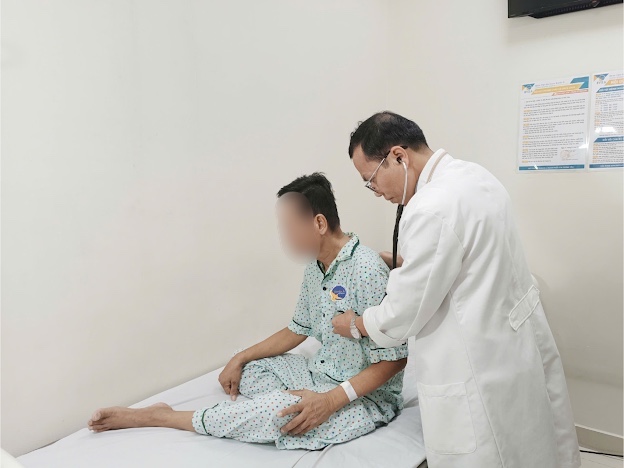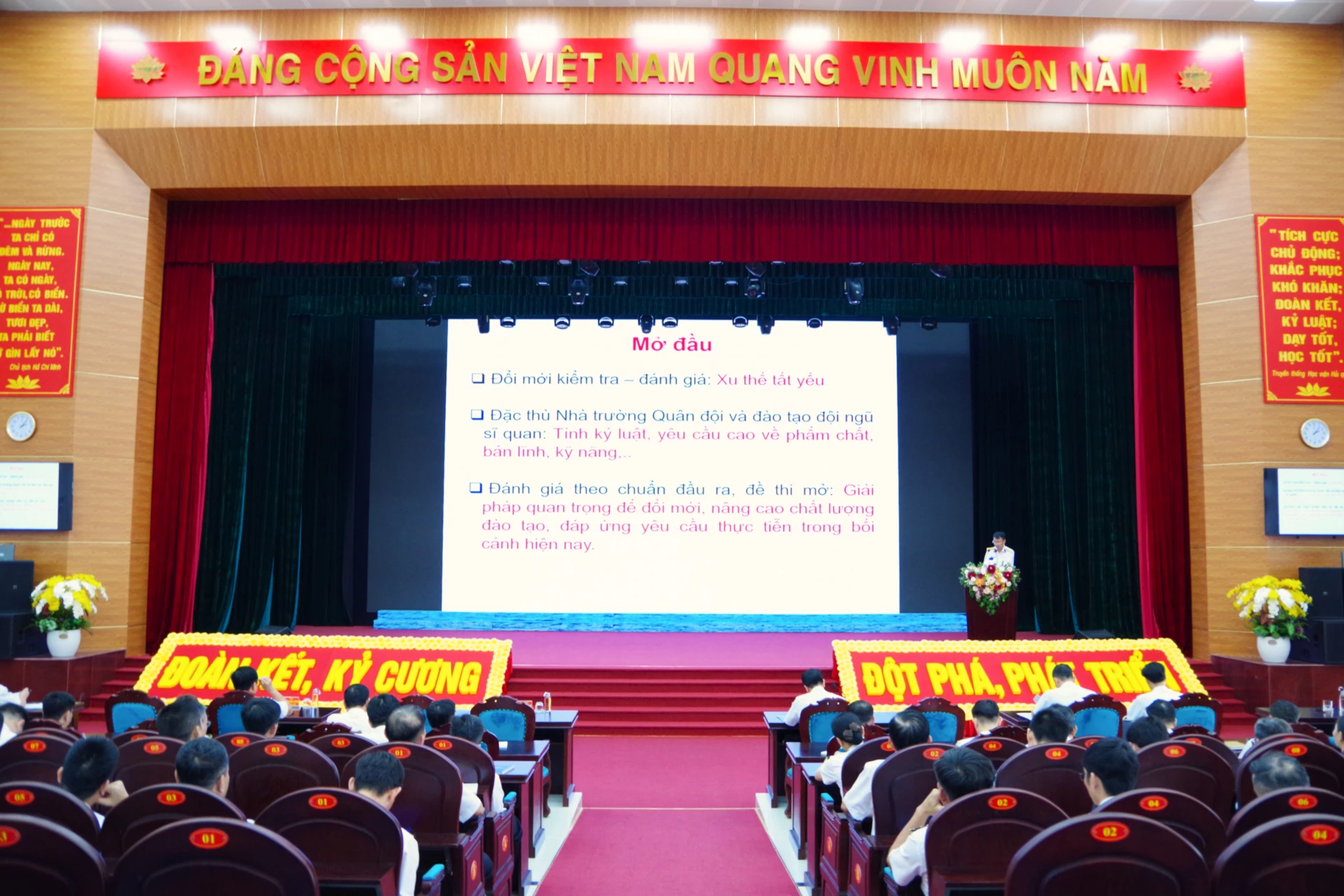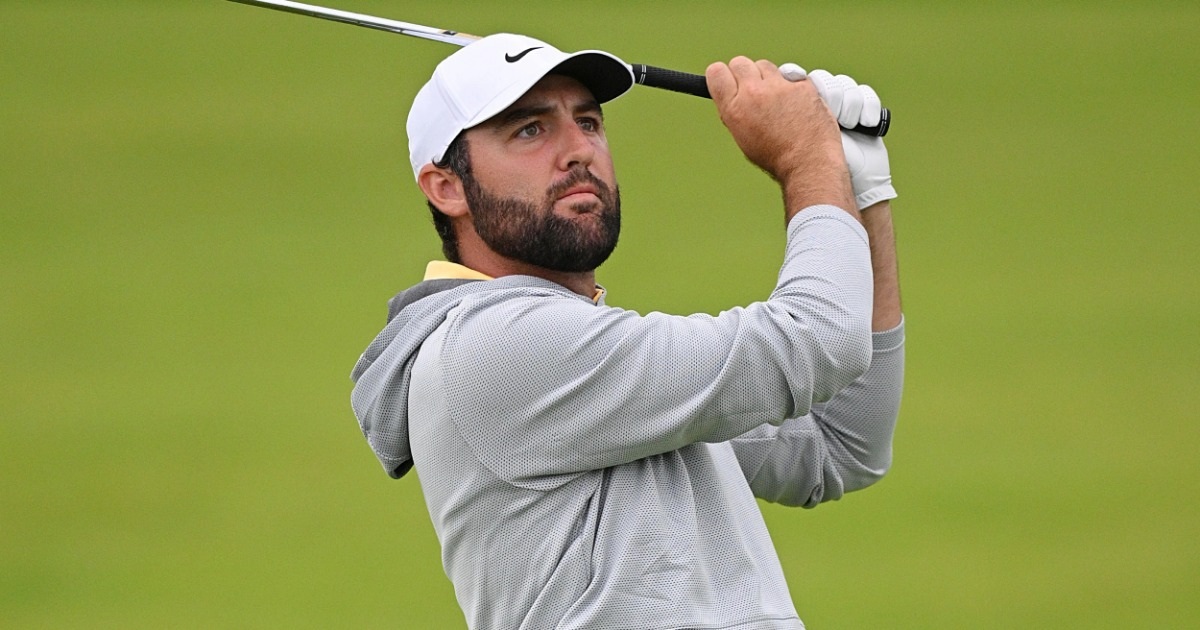Man in critical condition with acute myocardial infarction after chest pain
"While at home, he complained of severe chest pain. Within half an hour, my family took him to the emergency room," patient D.TT's mother recalled.
When the patient arrived at the local hospital for emergency treatment, his heart suddenly stopped. Doctors intubated him and performed emergency electric shocks to treat ventricular fibrillation, and continued resuscitation. At the same time, they alerted multiple hospitals and transferred the patient to Xuyen A General Hospital for treatment.
Upon admission, it was determined that this was a case of acute myocardial infarction complicated by respiratory arrest. The doctors continued resuscitation and quickly transferred the patient to the cathlab to check the blood vessels supplying the heart.
The angiography results showed that Mr. T. had a narrowed left coronary artery, the right coronary artery was almost completely blocked and contained many blood clots - the cause of the sudden interruption of blood flow to the heart. With this condition, the patient was indicated for coronary artery stenting to restore blood flow.
During the intervention, Mr. T. continued to experience many episodes of ventricular fibrillation, forcing the doctors to continuously shock him, resuscitate him, and dilate the stent to save his life every second. After the intervention, the blood flow to the heart was restored but the flow was slow at level 2, the patient was transferred to the Intensive Care Unit for further monitoring and treatment.
12 days in a coma and the fierce battle to regain life
After the stressful intervention, Mr. T. was transferred to the Intensive Care Unit in a deep coma, with a weak heart, acidosis, no urine, and high doses of blood pressure medication.

Doctor examines patient T.
Photo: YV
On August 18, Master - Specialist Doctor 2 Tran Tan Viet, Head of the Cardiovascular Intervention Department of Xuyen A General Hospital, said that patient T. had a history of diabetes and smoked a lot of cigarettes, which could be the main risk factors for myocardial infarction. After the stent intervention to re-open the blood vessels that feed the heart, the subsequent treatment process at the Intensive Care Unit was actually quite complicated, lasting up to 12 days. Each day was a battle to maintain blood pressure, support breathing, prevent multiple organ failure, and control infection for the patient.
"We coordinated with multiple specialties, carried out many active treatments such as temporary pacemaker placement, continuous blood filtration, hypothermia and vasopressor use. There were times when the medical team and the family were almost desperate, thinking about taking the patient home. But with the determination to fight to the end of the family and the medical team, a miracle happened: after 12 days of active treatment, patient T. gradually regained consciousness," said Dr. Viet.
On the 12th day in the Intensive Care Unit, Mr. T. began to open his eyes, his consciousness gradually improved, his heart rate became more stable, his vital signs gradually returned to normal, he was able to be weaned off the ventilator, and all vasopressors were stopped. He was then transferred to the Cardiovascular Intervention Unit for continued care.
Currently, Mr. T.'s health has fully recovered, he can move on his own, does not need dialysis, and has recovered all his memory. The patient was discharged from the hospital to the joy of his family and the medical team.
"The most important thing in myocardial infarction emergency is time. Every minute of delay can cause permanent damage to the heart muscle, even threatening life," Dr. Viet shared.
Source: https://thanhnien.vn/gianh-su-song-cho-nguoi-dan-ong-12-ngay-hon-me-do-nhoi-mau-co-tim-185250817202641655.htm






























![[Photo] An Phu intersection project connecting Ho Chi Minh City-Long Thanh-Dau Giay expressway behind schedule](https://vstatic.vietnam.vn/vietnam/resource/IMAGE/2025/8/21/1ad80e9dd8944150bb72e6c49ecc7e08)
































![[Photo] Politburo works with the Standing Committee of Hanoi Party Committee and Ho Chi Minh City Party Committee](https://vstatic.vietnam.vn/vietnam/resource/IMAGE/2025/8/21/4f3460337a6045e7847d50d38704355d)

































Comment (0)